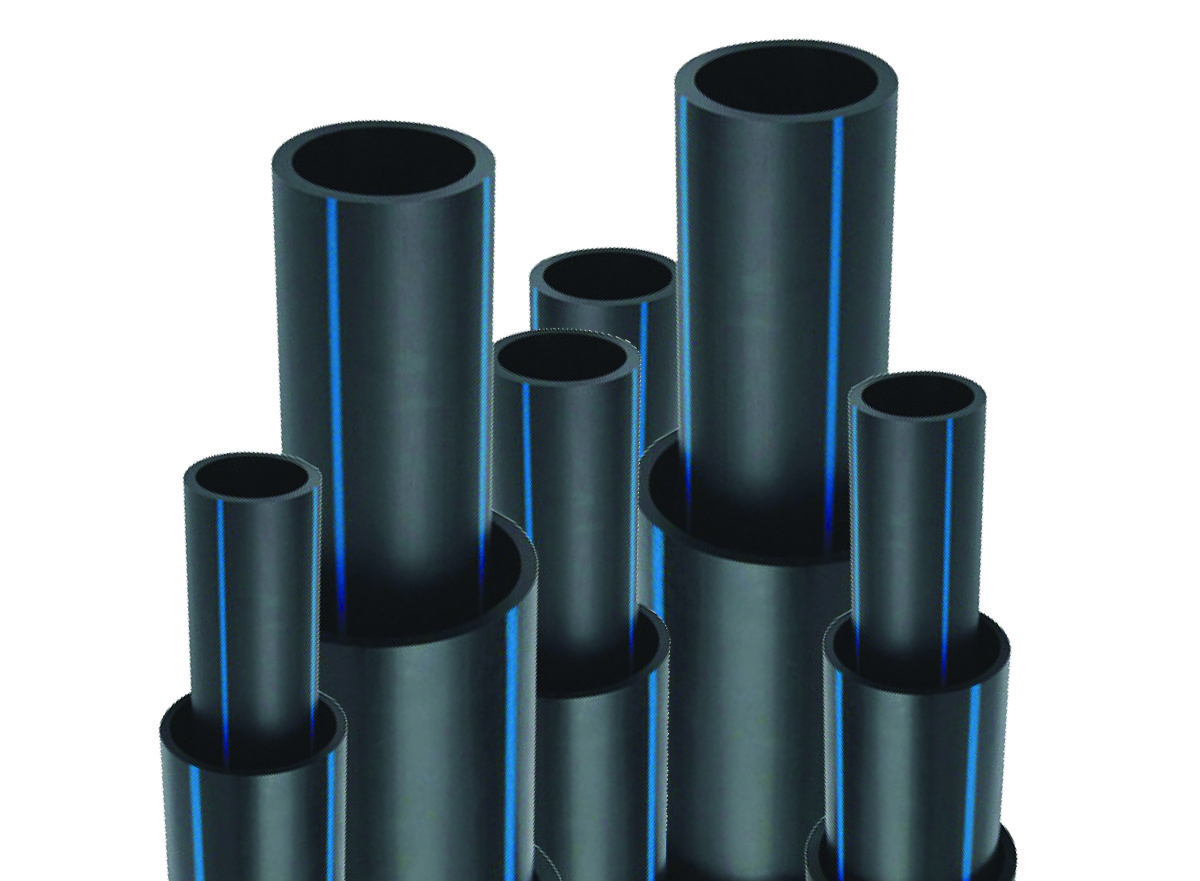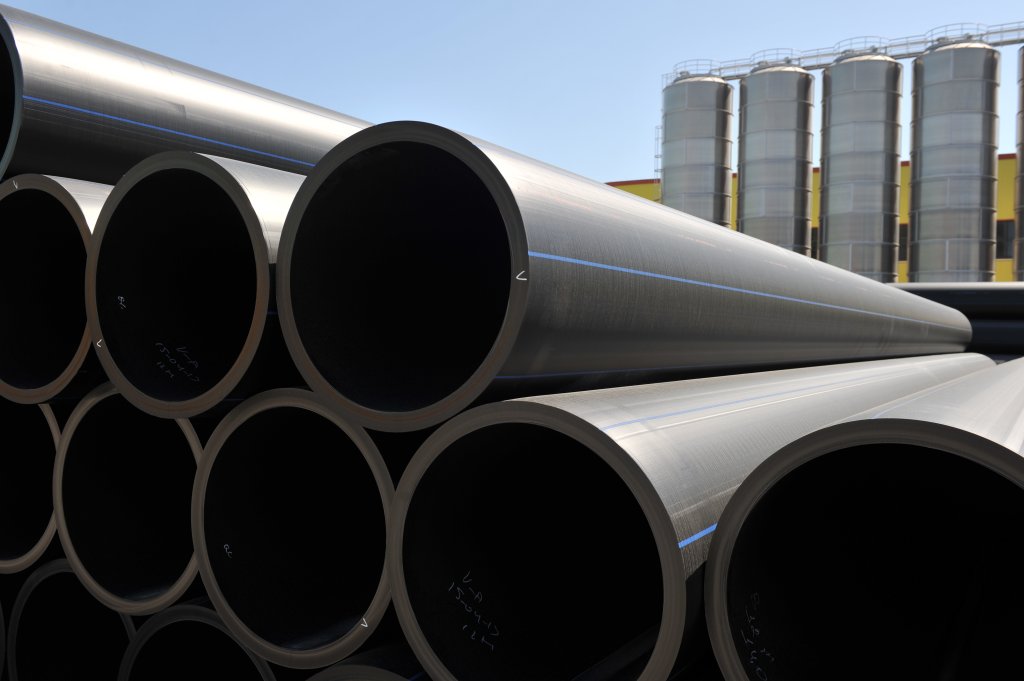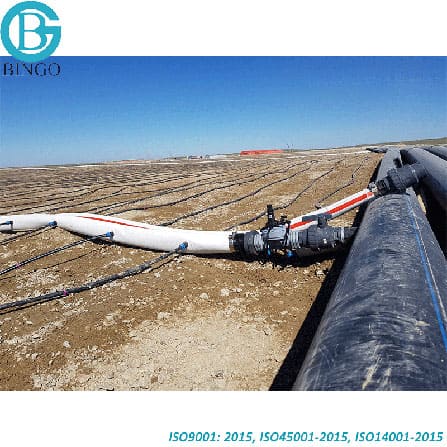How American Plastics HDPE Pipe for Oilfield Supports Energy Infrastructure
Discover the Production Process Behind High-Quality HDPE Pipe and Its Applications
The production procedure of high-quality HDPE pipelines is elaborate and systematic. It begins with the choice of resources that improve performance. Following this, ethylene goes through polymerization to form resin, which is then shaped through extrusion. Quality control is extremely important, making certain that the end product satisfies stringent requirements. The journey of HDPE pipes does not finish with production. Their applications throughout numerous sectors expose a more comprehensive value worth analyzing.
Recognizing HDPE: Characteristics and Advantages

High-density polyethylene (HDPE) is a versatile thermoplastic recognized for its sturdiness and resistance to various ecological variables. This product exhibits excellent tensile strength, making it ideal for requiring applications. Its low-density structure contributes to a light-weight item, helping with ease of handling and installation. HDPE likewise showcases exceptional resistance to chemicals, which reduces degradation when subjected to extreme substances.
The material's low wetness absorption better boosts its durability, making it optimal for use in pipelines and tank. In addition, HDPE is immune to ultraviolet (UV) radiation, making certain that items keep their stability even when revealed to sunshine. In addition, its flexibility allows for the development of detailed forms without compromising toughness. The eco-friendly nature of HDPE, usually acquired from recycled materials, contributes to its appeal, promoting sustainable techniques in production. Generally, these homes and advantages make HDPE a favored option for numerous commercial and customer applications.
Resources Selection for HDPE Production
The choice of raw products for HDPE production is important to validate the end product fulfills the wanted requirements and high quality standards. High-density polyethylene (HDPE) is largely created from polymerized ethylene, derived from nonrenewable fuel sources such as all-natural gas or crude oil. The top quality of these feedstocks greatly influences the mechanical and thermal properties of the last HDPE.
Ingredients also play a considerable role in boosting HDPE's efficiency, consisting of anti-oxidants, UV stabilizers, and colorants, which boost longevity and resistance to ecological factors. The option process must take into consideration not only the chemical make-up of the raw materials yet also their processing qualities to ensure reliable manufacturing.
The sourcing of raw products should prioritize sustainability and conformity with ecological regulations, as liable practices are crucial in today's market. Inevitably, careful raw product choice lays the structure for creating high-grade HDPE pipelines appropriate for varied applications.
The Extrusion Refine: Shaping HDPE Pipeline
The extrusion procedure plays an important role fit HDPE pipelines, beginning with careful product prep work strategies that assure excellent flow and consistency. Just as crucial is the layout of the die, which straight affects the last dimensions and surface top quality of the pipeline. With each other, these aspects add significantly to the efficiency and high quality of HDPE pipe manufacturing.
Product Prep Work Techniques
Efficient manufacturing of HDPE pipelines starts with precise product prep work methods, specifically the extrusion procedure. Throughout this phase, high-density polyethylene resin is first dried to eliminate moisture, ensuring ideal flow characteristics. The material is after that fed into the extruder, where it undergoes heating and melting, changing right into a thick state. This heating process is carefully managed to preserve the product's honesty and performance. The liquified HDPE is compelled through a die, shaping it into a continual pipe form. Proper temperature level monitoring throughout extrusion is important, as it directly influences the material's residential properties and the end product top quality. As soon as formed, the HDPE pipeline is cooled and reduced to defined sizes, all set for succeeding processing and applications.
Die Style Relevance
Accuracy in die design plays a crucial function in the extrusion procedure of HDPE pipelines. The die serves as the final shaping device, directly influencing the pipeline's dimensions, wall thickness, and surface area finish. A properly designed die warranties consistent material flow, minimizing defects such as abnormalities and vulnerable points. The geometry of the die have to be optimized to suit the specific residential or commercial properties of HDPE, including its viscosity and thermal habits throughout extrusion. In addition, the cooling price of the material as it goes through the die can considerably affect the pipe's architectural integrity. Consequently, buying sophisticated die innovation is important for suppliers intending to produce top quality HDPE pipelines that satisfy industry criteria and customer assumptions.
Quality Assurance Actions in HDPE Manufacturing
Although different factors influence the high quality of HDPE pipe manufacturing, reliable top quality control procedures are critical to assure consistency and integrity in the final product. Trick top quality control methods consist of extensive product assessment, verifying that the raw polyethylene meets recognized requirements for purity and thickness. Throughout the extrusion process, criteria such as temperature level, pressure, and cooling time are carefully checked to preserve dimensional accuracy and architectural integrity
Furthermore, post-production screening is vital; suppliers frequently carry out hydrostatic tests to assess the pipeline's stamina and resistance to pressure. Visual examinations for surface area flaws additionally boost quality control. Certification from pertinent criteria organizations, like from this source ASTM or ISO, gives an additional layer of credibility. By carrying out these thorough quality assurance procedures, suppliers can lessen problems, enhance performance, and make sure that the HDPE pipelines fulfill the details needs of different applications, ultimately leading to client fulfillment and rely on the item.
Applications of HDPE Pipe Throughout Industries
HDPE pipelines are utilized across numerous sectors due to their durability and flexibility. In water distribution systems, they guarantee effective distribution, while in wastewater management, they supply trusted solutions for waste transportation. Additionally, agricultural watering networks take advantage of HDPE's resistance to rust and versatility, making it a perfect selection for contemporary farming practices.

Water Distribution Solutions
A substantial number of markets depend on high-density polyethylene (HDPE) pipes for effective water distribution systems. Understood for their durability and resistance to rust, HDPE pipelines are extensively utilized in local water networks, farming irrigation, and industrial applications. Their light-weight nature assists in simple handling and installation, decreasing labor costs and time. Additionally, HDPE pipes can accommodate various stress degrees, making them ideal for both reduced and high-pressure systems. hdpe pipe fittings Midland TX. The flexibility of the product enables smooth integration right into existing framework, decreasing the demand for extensive excavation. HDPE's resistance to chemical leaching warranties that the water supplied remains secure and tidy, making it a suitable choice for keeping the high quality of drinkable water throughout various fields.
Wastewater Monitoring Solutions
Efficient water distribution systems additionally lead the way for cutting-edge wastewater monitoring options, where high-density polyethylene (HDPE) pipes play a substantial role. Popular for their durability and resistance to rust, HDPE pipes are excellent for delivering wastewater in various settings. Their versatility enables simple installment in complicated settings, reducing the requirement for comprehensive excavation. Furthermore, HDPE's smooth interior surface area reduces rubbing, boosting circulation prices and efficiency. These pipelines are also immune to chemical leaching, making certain that pollutants do not jeopardize the surrounding atmosphere. Industries, districts, and therapy facilities progressively count on HDPE pipelines for their reliability and longevity, making them a favored selection for contemporary wastewater administration systems. This versatility underscores the crucial relevance of HDPE pipelines across numerous applications.
Agricultural Irrigation Networks
Agricultural irrigation networks profit considerably from using high-density polyethylene (HDPE) pipelines, which offer reliable and trustworthy water distribution to plants. HDPE pipelines are light-weight, making them very easy to deliver and install, while their flexibility enables different configurations in varied terrains. These pipes show outstanding resistance to corrosion, chemicals, and UV radiation, ensuring longevity in severe farming environments. Furthermore, their smooth interior surface area reduces friction loss, enhancing water flow and minimizing energy expenses connected with pumping. The long life of HDPE pipelines, usually going beyond half a century, adds to decrease maintenance and replacement costs. Farmers significantly count on HDPE pipes to enhance irrigation effectiveness and advertise lasting farming methods, inevitably leading to improved crop yields and source conservation.

Future Trends in HDPE Pipe Innovation
As the demand for sustainable and reliable infrastructure grows, developments in HDPE pipeline innovation are positioned to transform numerous industries. Arising patterns include the combination of smart innovations, such as sensors and IoT abilities, which promote real-time tracking of pipeline conditions, decreasing upkeep prices and avoiding leaks. Furthermore, the development of innovative production techniques, such as 3D printing, is enabling the manufacturing of complicated, customized pipe styles that deal with particular task requirements.
In addition, the concentrate on recycling and round economic situation techniques is driving the innovation of HDPE pipelines made from recycled products, boosting sustainability. Boosted jointing approaches, such as electro-fusion and mechanical installations, are also improving setup performance and dependability. The growing emphasis on environmental guidelines is pushing makers to take on greener manufacturing processes, guaranteeing that HDPE pipes not only satisfy sector criteria yet also promote an even more sustainable future for infrastructure development.
Often Asked Concerns
Exactly How Does HDPE Contrast to Other Plastic Materials?
HDPE outmatches lots of other plastic materials concerning toughness, chemical resistance, and adaptability. Its reduced density and high tensile stamina make it perfect for numerous applications, typically exceeding options in both performance and longevity.
What Are the Environmental Impacts of HDPE Production?
The environmental my company effects of HDPE production consist of greenhouse gas emissions, power consumption, and possible air pollution from producing procedures. In addition, improper disposal can cause soil and water contamination, elevating worries concerning lasting ecological impacts.
Can HDPE Water Lines Be Reused?
Yes, HDPE pipes can be recycled. Lots of centers accept used HDPE for processing, transforming it into new products. This reusing adds to sustainability efforts, reducing plastic waste while saving sources and power in the manufacturing cycle.
What Is the Life Expectancy of HDPE Water Lines?

How Do Temperature Variations Affect HDPE Pipe Efficiency?
Temperature variants significantly affect HDPE pipe performance, affecting adaptability and toughness. High temperatures can result in softening, while low temperatures might cause brittleness, eventually influencing the pipeline's you could try this out sturdiness and viability for numerous applications in varied environments.